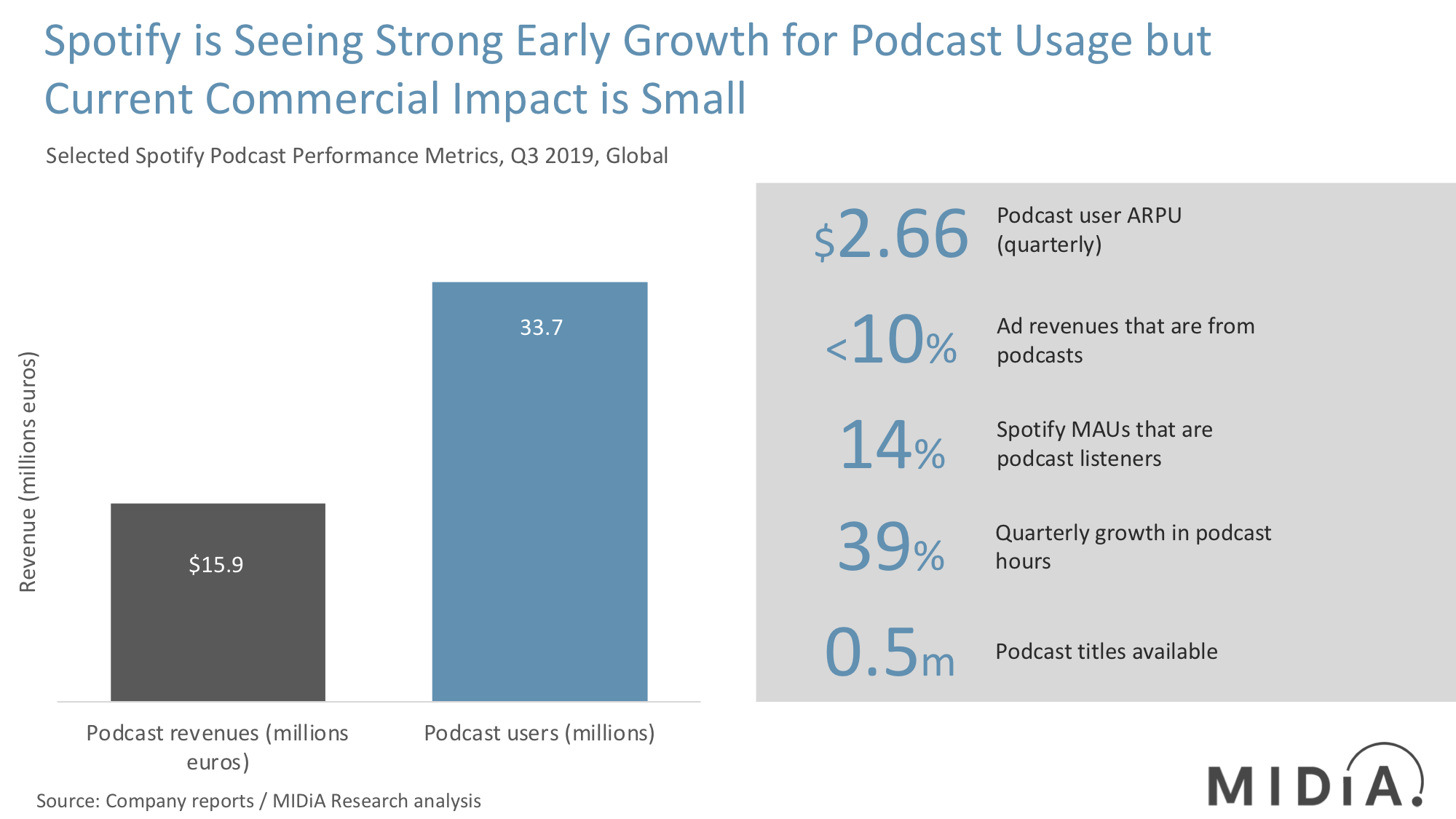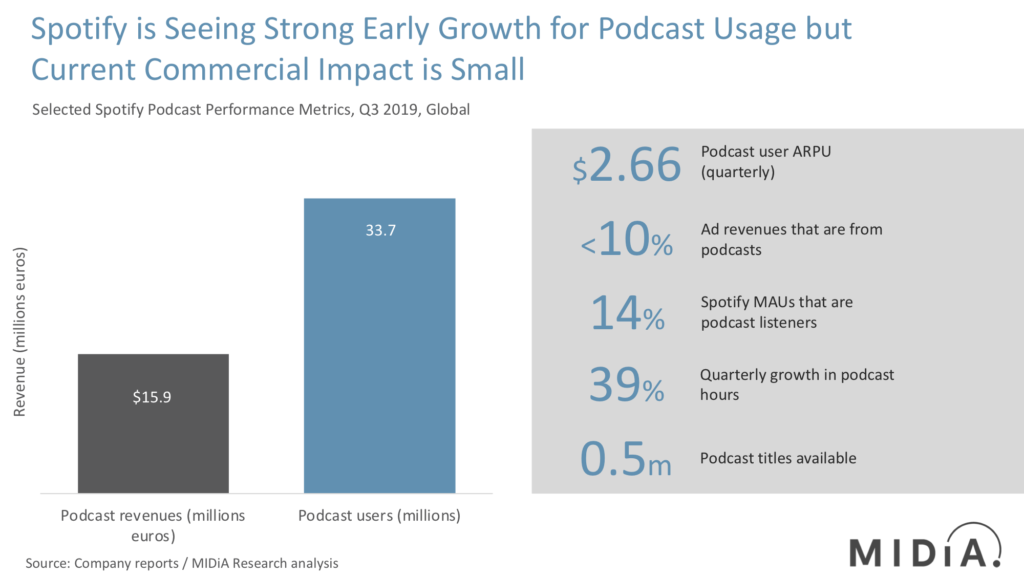Spotify podcasts Q3 2019: Solid start


Word count is always a useful guide for how important something is to a company’s ambitions. It is therefore no small detail that Spotify’s Q3 2019 earnings release mentioned the word ‘podcast’ thirteen times. Spotify has bet big on podcasts – spending $340 million on Gimlet and Anchor – and they now form a central component of Spotify’s strategy for five main reasons:
- They are Spotify’s most realistic mid-term means of creating original content at scale
- They represent Spotify’s (current) biggest long-term revenue bet outside of music
- They are crucial to helping Spotify fulfil its ambition of enabling a million creators to earn a living from their art
- They help Spotify diversify its content offering
- They represent an opportunity to improve margins
Podcasts also enable Spotify to compete on a bigger stage: radio. The commercial radio market is a bigger pond to fish in than the recorded music market and represents an opportunity to drive the continued growth investors so crave should subscriber growth slow.

Spotify announced in its Q3 2019 earnings that 14% of its monthly average users (MAUs) streamed podcasts on the platform during the quarter, representing 33.7 million users and generating $15.9 million.* With total podcast hours up 39% on Q2, there is clearly momentum too – though this growth will be boosted by new podcast users shifting more of their podcast time to Spotify. Spotify has established itself as an important player in the global podcast marketplace but is far from a dominant player yet (it will likely hit 5.5% of global podcast revenue market share by year end 2019). Also, podcasts are still a tiny part of Spotify’s business (just 0.8% of Spotify’s total Q3 2019 revenue).
Competing for share of ear
Spotify’s podcast moves however are motivated not just by growth ambition but also as a defensive strategy for maintaining its audience’s attention.Prior to adopting its bold podcast strategy, Spotify’s users were already active podcast users – the problem was that they were going elsewhere to listen. So, podcasts for Spotify are as much about competing for share of ear as they are driving ad revenue. As of Q3 2019, just under 14% of Spotify’s user base streamed podcasts on the platform. MIDiA’s consumer data indicates that 32% of Spotify’s weekly active users (WAUs) listen to podcasts monthly, 27% weekly and 19% daily. Spotify’s reported numbers are on a quarterly basis so a comparison with the monthly figure is generous to Spotify, but even on that basis more than half of Spotify’s user base is still listening to podcasts elsewhere. This is clearly both challenge and opportunity for Spotify and points to why it is taking originals so seriously.
Featured Report
Ad-supported music market shares Spotify ascending
Ad-supported streaming has always occupied a unique and slightly contentious place in the music industry ecosystem. On the one hand, ad-supported still represents an effective way to reach consumers at scale, creating a wider subscriber acquisition funnel.
Find out more…Spotify’s clear strategic focus suggests that there is plenty more to come and with nearly half of current podcast listeners also Spotify users, the moves it makes will have profound implications for all other companies in the podcast marketplace.
NOTE: This blog is based on an excerpt from MIDiA’s forthcoming report ‘Spotify Podcast Strategy: Strong Start but a Long Way to Go’.
*Spotify stated podcast revenues were ‘less than 10%’ of all ad revenues in its Q3 19 earnings release. As the results are SEC regulated we will assume that Spotify was not being intentionally misleading with this figure and that it does not also mean less than 5%. For this estimate we have taken the midpoint of 7.5% of all ad revenue.

The discussion around this post has not yet got started, be the first to add an opinion.